
views
Motivating Yourself For Exercise

Enjoy your exercise. Engaging in physical activities that you enjoy will transform exercise into a hobby rather than pure calorie burning. Everyone is interested in different levels of intensity in their workout. Finding something appropriate and enjoyable for you will help you keep exercising as well as establish a healthy relationship with exercise. If you enjoy mingling with those in your community and lifting weights, the gym could be perfect for you. If you are into more solitary, aerobic exercise, try walking or jogging. This is easy to pair with a number of other hobbies, such as bird watching. Dancing is an excellent way to exercise. If you enjoy dancing, enroll in an aerobic dance class that meets regularly.

Keep yourself entertained. Many teens and adults use exercise as a healthy escape from everyday stressors. While you are still getting your body and mind acclimated to exercise, try getting your focus off the burn. Run on the treadmill or track with a portable music device, or watch TV while you work out at home. Some apps, such as the Zombies Run app, offer immersive audio storylines that are geared toward helping you run or walk and stay entertained at the same time.
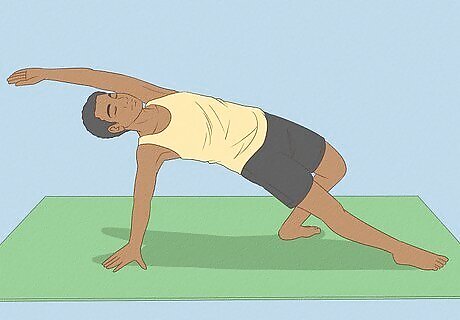
Exercise at your own pace. Choosing to exercise at your own pace may help you become more comfortable with your routine without any added pressure from peers or trainers. Make sure you are pushing yourself to get the most out of your routine. Increasing your heart rate will has more health benefits than exercising only at a comfort level – just make sure not to push yourself too hard.
Establishing an Exercise Routine
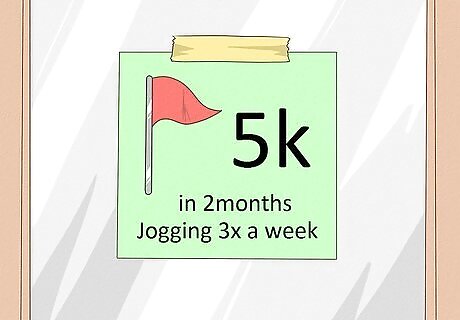
Set goals for yourself. Exercise should be enjoyable. Gain control of your routine and think about what you want to get out of it. Decide what you want to achieve in the short term, as well as the big picture. Goals will keep you focused on healthy lifestyle change. Set goals that are S.M.A.R.T: Specific, Measurable, Achievable, Relevant, and Time-bound. For example, "I will run a 5k in two months by walking/jogging/running three times a week." A short term goal might be to determine if you can do something simple like walk one mile. If not, that is a good, achievable goal. Long term goals should be something you hope to be able to do after a few months of dedication. Using the mile walk from the previous example, you might consider upping that to a 2 mile trip to the store and back. You might also ask your doctor if your body is capable of building toward running that mile.
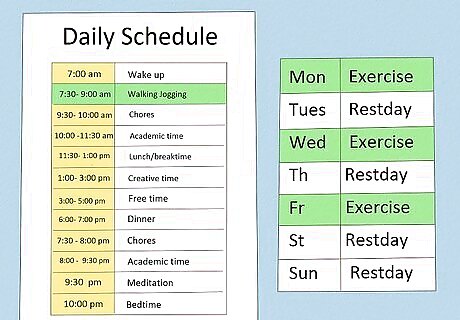
Set aside time in your day. This simple step has many benefits. First, you ensure that you have a plan for getting enough exercise. Second, it will limit how much you exercise, helping you get back to other important aspects of your life. Scheduling time for exercise and other obligations is part of a healthy life balance. Make a "date" with yourself for exercise. Put it in your calendar just as you would a trip to the dentist. Remember, it's preventive healthcare!

Exercise with a friend. This will make it feel like a social appointment with another human being that you need to keep. You will be there to encourage each other to continue the routine after the newness wears off. This will also make it easy for you to monitor each other for early signs of exercise addiction. If your workout buddy becomes dishonest or secretive about their exercise, gets angry if they miss a workout, or is ramping up their workout to non-recreational levels, they may be developing an exercise addiction. You should watch out for any changes like this in yourself as well.
Keeping a Healthy Balance
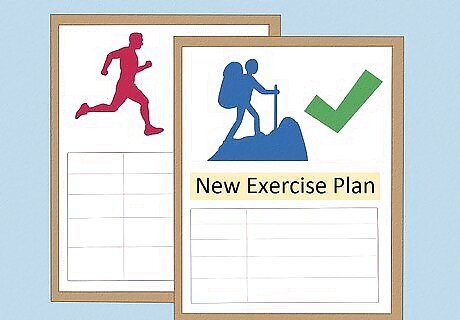
Recognize your vulnerability. Everyone is susceptible to exercise addiction, from trained athletes to office workers. If a life change opens up new time for exercise, make sure you limit how much time and energy you devote to it. Create a new exercise plan that allows you to pursue other interests as well.

Limit how much you ramp up exercise routines. Having unnecessarily high expectations for calorie expenditure or length of workout are signs of an exercise addiction. It is natural to scale up your workout, but there is an upper limit to how much you should expect from your body. Try focusing more on other areas of your life once you can complete your daily workout easily and mindlessly.
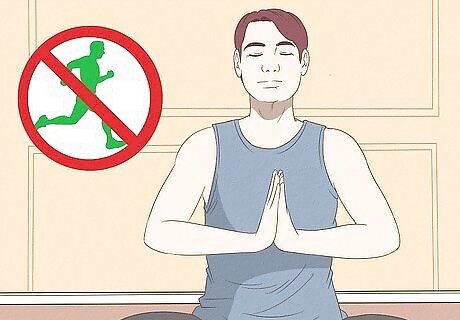
Don’t substitute exercise for another addiction. Exercise releases dopamine into your brain – the same chemical your body releases when you satisfy an addiction. Going for a run is a good way to escape a cigarette craving, but you may be replacing one dependence for another. You should be getting enough exercise, but seek help in quitting your pre-existing addiction before beginning or extending a new workout regimen.

Be honest about your exercise regimen. If you find yourself lying to those close to you about how much you exercise, you may have an addiction. If you have an obsessive personality, make a point of mentioning your workout regimen to a friend every once in awhile. This ensures that you feel comfortable with the amount of exercise you are getting.

Don’t place too much emphasis on exercise. It is important to plan an exercise routine that keeps you in good shape. However, you should have a healthy balance of interests that covers all aspects of life. If you spend several hours each day on your exercise routine, you may have an addiction. Try spending more time caring for those around you, or pick up that old hobby you had forgotten about.

















Comments
0 comment